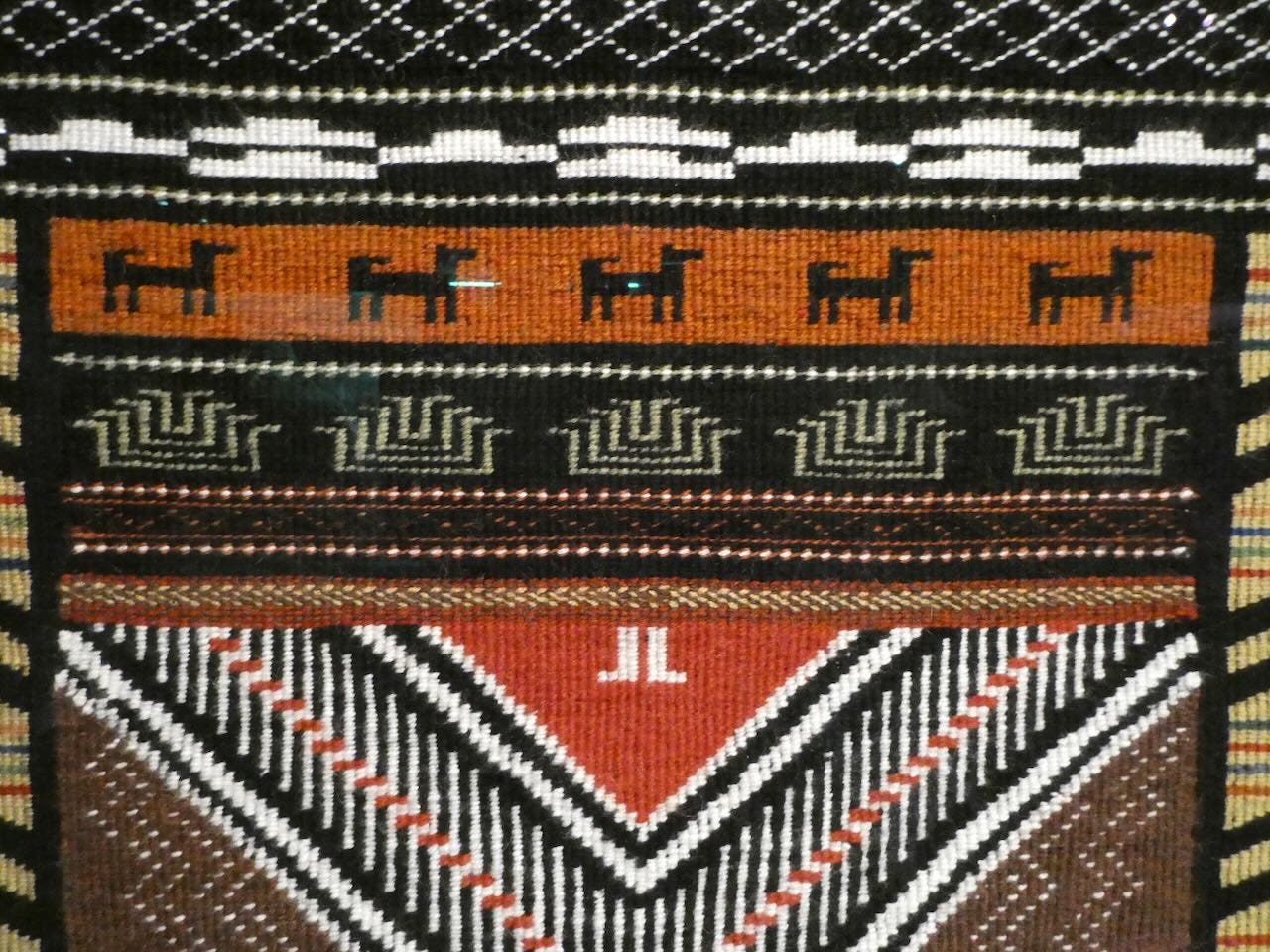More than a year ago, I explored the topic of woolly dogs, the unique, domesticated dogs of the Salish Sea. I would like to return to the subject, in part because I like dogs, but also to highlight some recent encounters with them.
The first was at the Burke Museum, where I was privileged to see an amazing basket collected on the Skokomish Reservation and donated to the museum in 1932. Made of twined cattail leaves, it features several animals. On the top row are interspersed wolves and western grebes. According to Skokomish tradition bearer and artist Gerald Bruce Miller, known as Subiyay, the wolves “taught men loyalty to his people, the necessity of orderly hierarchy, the importance of honor and family and that only the strong survive,” all traits essential to the life of Twana men. The grebes, called helldivers, represent speed and observation, two assets the birds used to escape pursuers.

Below and depicted throughout are woolly dogs. In contrast to the wolves, whose tails point down, woolly dog’ tails curl up, like a question mark. Standing atop a series of boxes, they are the emblem of the Skokomish Nation and represent material wealth. Bordering the boxes are triangles representing one half of a limpet shell, the feast dish of crows. Between the boxes, the motif forms pens surrounding a woolly dog puppy. In some parts of the Salish Sea, the woolly dogs were kept isolated on islands, in part to prevent their interbreeding.

As so often happens, once I learned about woolly dogs, their importance to the Skokomish people, and how they are depicted, I started seeing them everywhere. The first was at the Mary Theler Wetlands Preserve at the head of Hood Canal. It’s a wonderful spot for birding and strolling though you have to watch out because amazingly, there’s a potential for a tsunami to hit there. But you’d have some warning as the water (max. depth 13.8 feet) wouldn’t reach the wetlands until approximately 3 hours 40 minutes after an earthquake on the Cascadia Subduction Zone.
I think it’s pretty cool that a tsunami could take a right turn at Admiralty Inlet, then veer right again down Hood Canal, and slosh up at Belfair. And, they have; two tsunami deposits in the area have been dated at about 800 and 200 years ago, respectively.
As I noted when I first wrote about woolly dogs, they went extinct around the end of the 1800s but one still remains. In the 1850s, ethnologist George Gibbs obtained a woolly dog, which he called Mutton. Working with Gibbs was Dr. Caleb Kennerly, a naturalist and physician. One of their goals was to obtain a mountain goat, which were little known and specimens highly prized. They were successful but unfortunately, wrote Kennerly on August 19, 1859, Gibbs’ “famous Indian dog ‘Mutton’ got at it [the goat] and ate the head off….when I opened the bag and saw the injury, I could almost have cried. Mutton was sheared a short time ago, and as soon as his hair grows out we will make a specimen of him.”
Kennerly did not exaggerate, Mutton ended up at the Smithsonian, where he rested in a drawer, seemingly lost to history until historian Candace Wellman put together his story and helped rediscover the final known woolly dog. (It’s unclear if Mutton’s death was on purpose or accidental; he may have died from sickness. ) At present, researchers are studying Mutton and plan to publish a genetic analysis that will shed further light on these amazing dogs.
I would like to thank Rebecca Andrews, Collections Manager, Americas, Burke Museum; Violet Elliott, Snuneymuxw First Nation Artist; Liz Hammond-Kaarremaa, Coast Salish textile expert; Audrey Lin, Department of Anthropology, Smithsonian Museum; and Candace Wellman, historian and author for their help with and permission to publish this newsletter.
Thanks to everyone who took out a paid subscription last week for my newsletter. I appreciate your support.
I just found out that there are a few spaces left on my Stories in Stone building tour this Saturday, 10am. It’s in connection with the Northwest Geological Society so you’ll have the joy of being in the field with a bunch of rock geeks! Please register through their website.






Given the state of genetics I suspect a recovery of Wooly Dogs is possible. The first step would be to recover the complete DNA of one, very possible. Then the DNA of existing dogs throughout the world would have clues as to which genes were responsible for the 'Wooly'. I would not be surprised if simply cross breeding and selecting those closest would come up with something very close to the 'original'. This was likely how Wooly Dogs lineage was established in the beginning.